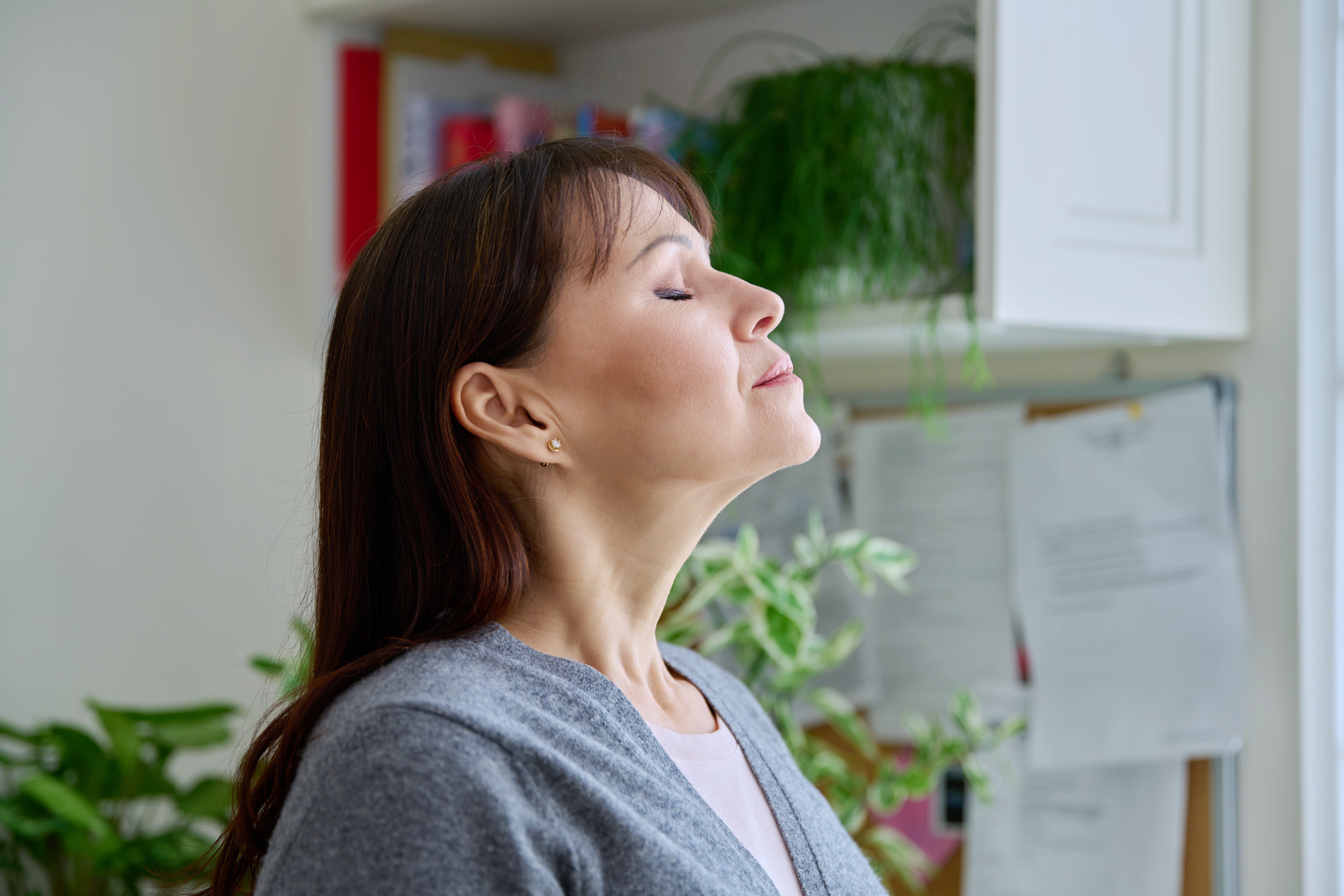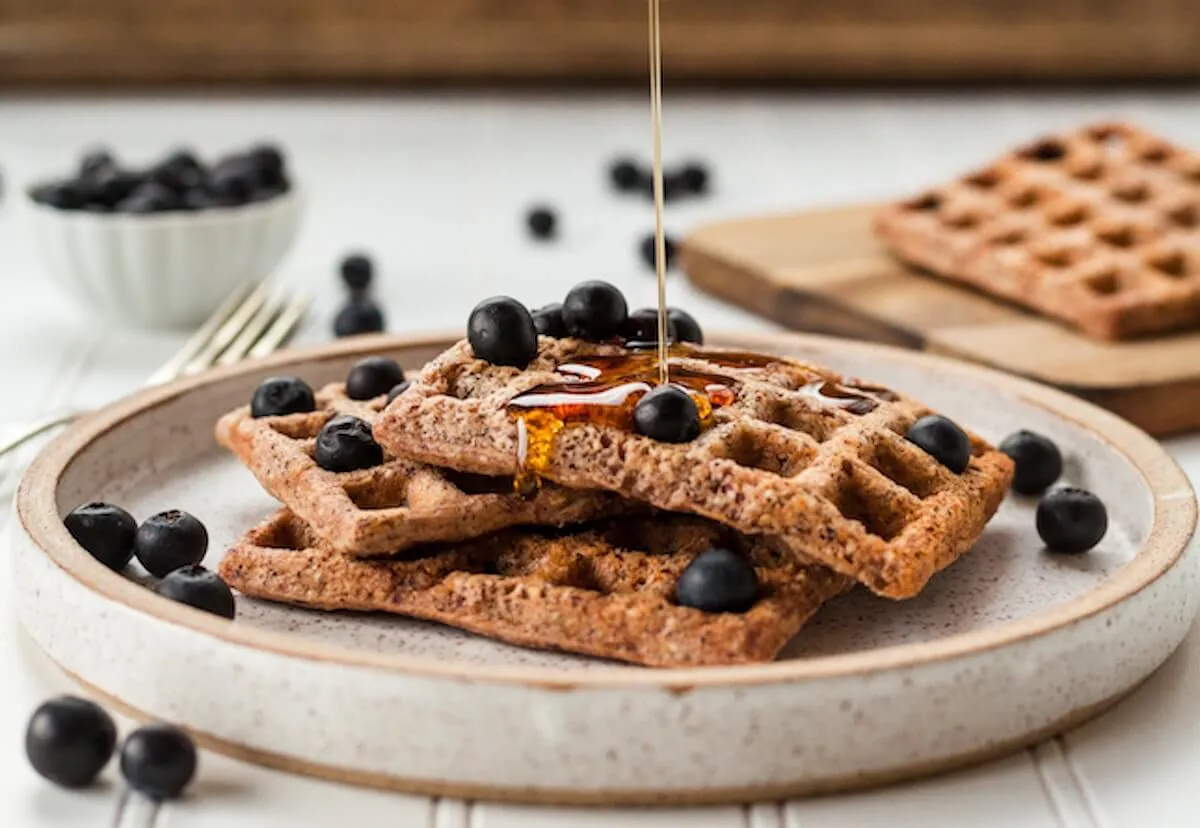Key Takeaways
- Seasonal stress may increase cortisol levels, which can disrupt glucose stability and energy levels.
- Simple habits, such as practicing breathwork, taking short walks, and eating balanced meals, can help lower stress and stabilize blood sugar levels.
- Signos insights reveal how stress affects your glucose, making it easier to build routines that support your metabolic health.
{{mid-cta}}
The shift into fall can feel like a jolt to your system. Days are shorter, schedules are often busier, and cooler temperatures keep us indoors. These seasonal transitions don’t just affect mental health; they also shape how the body handles stress and influence blood sugar levels, insulin resistance, and overall well-being.
When stress levels climb, cortisol (the body’s main stress hormone) rises with them. Cortisol’s job is to keep you alert and energized, but it also increases glucose levels. In short bursts, that’s helpful. However, when stress persists, repeated spikes in cortisol can disrupt glucose balance, making energy levels less predictable. This can be especially challenging for people with type 2 diabetes or type 1 diabetes, who already work to maintain stable blood glucose levels.
The good news is that mindful routines can help support stress management, diabetes care, and overall metabolic health.
The Cortisol–Glucose Connection: How Stress Hormones Impact Blood Sugar

Cortisol takes center stage in the stress response. When your brain and body sense pressure, whether from a tight deadline, a busy household, or even a skipped meal, it signals to the adrenal glands to release cortisol. This hormone prompts the liver to release stored glucose into the bloodstream, providing a quick energy boost to your muscles and brain.1
In short bursts, this process is protective and, at one point, was even necessary for survival. Chronic stress keeps cortisol elevated longer than the body is designed to handle. Staying in a state of fight-or-flight over time can:
- Raise baseline blood glucose levels and HbA1c
- Decrease insulin sensitivity and increase insulin resistance
- Increase the risk of hyperglycemia and cardiovascular disease, especially in diabetes patients
- Contribute to kidney disease and a higher risk of complications over time
Research from the American Diabetes Association and a recent systematic review and meta-analysis show that stress is linked to poorer glycemic control, higher HbA1c, and diabetes distress.2 Even without diabetes, many people notice the effects of stress in the form of energy dips, irritability, or unpredictable glucose patterns—signs that glucose control is being disrupted.
Mindful Habits That Keep Glucose Steady

Stress is inevitable, but how you respond shapes your quality of life and metabolic wellness. Mindfulness-based relaxation techniques (including deep breathing, mindfulness-based stress reduction (MBSR), and meditation) can help lower cortisol levels and improve glucose control.
- Ease stress with mindfulness: Studies published in PubMed and DOI-indexed journals show that mindfulness-based stress reduction improves HbA1c and supports diabetes management and self-care in adults with type 2 diabetes mellitus.3
- Lower cortisol levels with breathwork: Try breathing exercises to calm the stress hormone response, balance the fight-or-flight system, and support well-being.4
- Steady glucose levels with a short walk: Physical activity helps lower blood sugar, enhances insulin sensitivity, and protects cardiovascular health, key components of effective diabetes education and wellness programs.5,6
- Prevent glucose spikes with balanced meals: Combining carbohydrate (carbs) with protein and healthy fats can help lower blood sugar and prevent low blood sugar (hypoglycemia) later.
The Signos Advantage: Linking Stress to Glucose

The effects of stress can feel unpredictable. Some days, a busy schedule barely fazes you, while other days it sends blood sugar soaring, leaving you drained and overwhelmed. Signos bridges diabetes management with stress and lifestyle awareness. By using continuous glucose monitoring, you can visualize how daily pressures affect your blood sugar in real-time.
For individuals managing type 2 diabetes or high blood sugar, this insight complements the guidance of your healthcare professional or a registered dietitian, enabling more informed decisions about diabetes care.
Signos doesn’t replace clinical care, but it enhances stress management and self-care routines that lead to better glycemic control and overall quality of life.
Here’s how Signos takes the guesswork out of managing your glucose:
- Spot stress-related glucose spikes with continuous glucose monitoring (CGM). Track how stressors (tough meetings, late nights, or skipped meals) affect your blood sugar in the moment.
- Log your day for clarity. Use context logging in the Signos app to record meals, workouts, and stressful events to identify what triggers your glucose shifts.
- Get personalized recommendations. Signos provides tailored suggestions, such as a quick breathing break, a short walk, or adjusting meal timing, that are based on your data.
- Catch patterns before they repeat. Identify recurring patterns across weeks or seasons using Trend Tracking so you’re armed with the knowledge to prevent spikes before they start.
Signos goes beyond numbers. It reveals how stress affects your glucose levels and provides clear steps to regain control.
Sample Mindful Fall Routine for Stable Glucose

Routines only work when they feel realistic. Complicated schedules can backfire, creating more stress if you can’t stick to them. Instead, start with a few simple habits and build from there.
Here’s one approach:
- Morning: Begin with five minutes of deep breathing or meditation before checking your phone. Choose a breakfast that balances carbohydrate intake to avoid hyperglycemia.
- Midday: Take a 10-minute walk after lunch to lower blood sugar and improve insulin sensitivity, a habit shown in randomized controlled trials to benefit people with and without diabetes.
- Afternoon: Pause for stretching or another walk instead of powering through the afternoon slump. Use context logging in the Signos app to record your energy levels. Eat a snack that includes protein, carbs, and fat, like an apple with peanut butter.
- Evening: Enjoy a balanced dinner with lean protein, vegetables, and whole grains. Avoid eating while distracted, such as watching TV or scrolling through your phone.
- Bedtime: Practice relaxation techniques to reduce stress levels, enhance mental well-being, and promote restful sleep.
Bottom Line
Fall doesn’t have to feel like a rollercoaster for your stress or your glucose. Simple habits, such as taking short walks, practicing deep breathing, and eating balanced meals, help maintain steady cortisol and blood sugar levels. Combined with insights from Signos, these practices make it easier to move through the season with steadier energy and better balance.
Learn More With Signos’ Expert Advice
Don’t let managing your glucose be another source of stress. Signos offers tools and resources to help you understand your body and create routines that support long-term health and improved quality of life. Learn more about glucose and metabolic health on the Signos blog.
Topics discussed in this article:
References
- Thau L, Gandhi J, Sharma S. Physiology, Cortisol. [Updated 2023 Aug 28]. In: StatPearls [Internet]. Treasure Island (FL): StatPearls Publishing; 2025 Jan-. Available from: https://www.ncbi.nlm.nih.gov/books/NBK538239/
- Joseph JJ, Golden SH. Cortisol dysregulation: the bidirectional link between stress, depression, and type 2 diabetes mellitus. Ann N Y Acad Sci. 2017;1391(1):20-34. doi:10.1111/nyas.13217
- Armani Kian A, Vahdani B, Noorbala AA, et al. The Impact of Mindfulness-Based Stress Reduction on Emotional Wellbeing and Glycemic Control of Patients with Type 2 Diabetes Mellitus. J Diabetes Res. 2018;2018:1986820. Published 2018 Jun 10. doi:10.1155/2018/1986820
- Perciavalle V, Blandini M, Fecarotta P, et al. The role of deep breathing on stress. Neurol Sci. 2017;38(3):451-458. doi:10.1007/s10072-016-2790-8
- Hashimoto K, Dora K, Murakami Y, et al. Positive impact of a 10-min walk immediately after glucose intake on postprandial glucose levels. Sci Rep. 2025;15(1):22662. Published 2025 Jul 2. doi:10.1038/s41598-025-07312-y
- Edwards MK, Loprinzi PD. Experimental effects of brief, single bouts of walking and meditation on mood profile in young adults. Health Promot Perspect. 2018;8(3):171-178. Published 2018 Jul 7. doi:10.15171/hpp.2018.23




.svg)










.svg)
.svg)
.svg)
.svg)
.svg)
.svg)
.svg)
